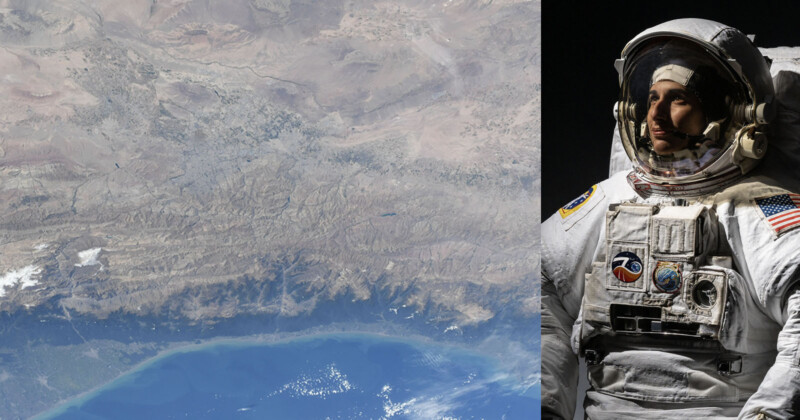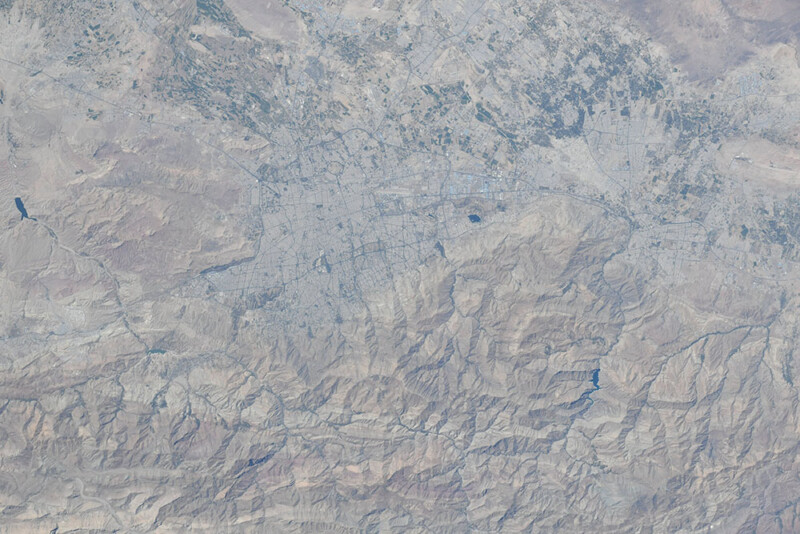Astronaut With Persian Roots Takes Photos of Iran From Space: ‘This May Be The Closest I Will Ever Get’

A NASA astronaut whose parents are Iranian took a series of incredible photos of the West Asian country from space, poignantly adding that it “may be the closest I will ever get.”
Jasmin Moghbeli says she has “been eager to capture some photos of Tehran” since arriving on the International Space Station (ISS).

Moghbeli’s parents fled to Germany during the 1979 Iranian revolution before moving to the United States when she was a baby.
“In the mornings, I would look at our projected orbits for the day and try to get to a window if I saw it would be within our view,” Moghbeli says of her attempts to get a photo of Iran.
“Sometimes, the work schedule would not allow it. Sometimes, the lighting from day/night transitions made it impossible to photograph. And, most often, there were clouds sitting right over Tehran.”
![]()
![]()
Moghbeli is currently on her first space flight and has been onboard the ISS since August 26.
“Finally, everything aligned and I was able to capture some decent photos,” she says on her X account (formerly Twitter).
“Our orbit had us passing almost directly overhead. At about 250 miles above, this may be the closest I will ever get to where my parents were born and raised.
“It was at least fun to message with them and plot out the different places they had lived growing up and in their early days together on a photograph that I had taken.”
Hello, Tehran! (!سلام تهران)
I have been eager to capture some photos of Tehran since I arrived at the @Space_Station. In the mornings, I would look at our projected orbits for the day and try to get to a window if I saw it would be within our view. Sometimes, the work schedule… pic.twitter.com/Fz6mwVndMc
— Jasmin Moghbeli (@AstroJaws) November 17, 2023
The Iranian Revolution
In the decades before the Islamic Revolution of 1979, Iran was ruled by King Reza Shah Pahlavi, otherwise known as the Shah.
While the Shah’s dictatorship repressed dissent and restricted political freedom, he also pushed the country to adopt Western-oriented secular modernization, allowing some degree of cultural freedom.
However, the Shah’s determination to showcase an increasingly liberal and modern front to the world and his ban on religious garments frustrated traditionalists in Iran.
Under Pahlavi, there was widespread censorship of the press. He repressed political dissent and the crackdown on communists and Islamists led to many being imprisoned and tortured. These factors, along with the Shah being perceived as a puppet of the U.S. and national economic uncertainty, culminated in the monarchy being overthrown.
The 1979 Iranian revolution saw the ousting of the Shah and the installment of Ayatollah Ruhollah Khomeini — a shift that would have long-lasting and far-reaching implications.
The Iranian revolution brought seismic changes to Iran, not least for women. Wearing the hijab was enforced and many of the rights women had been granted were withdrawn; the Female Minister of Education, Farokhroo Parsa, was executed by firing squad.
Image credits: Photographs by NASA/Jasmin Moghbeli. Official portrait of Jasmin Moghbeli in a spacesuit by NASA/Robert Markowitz.